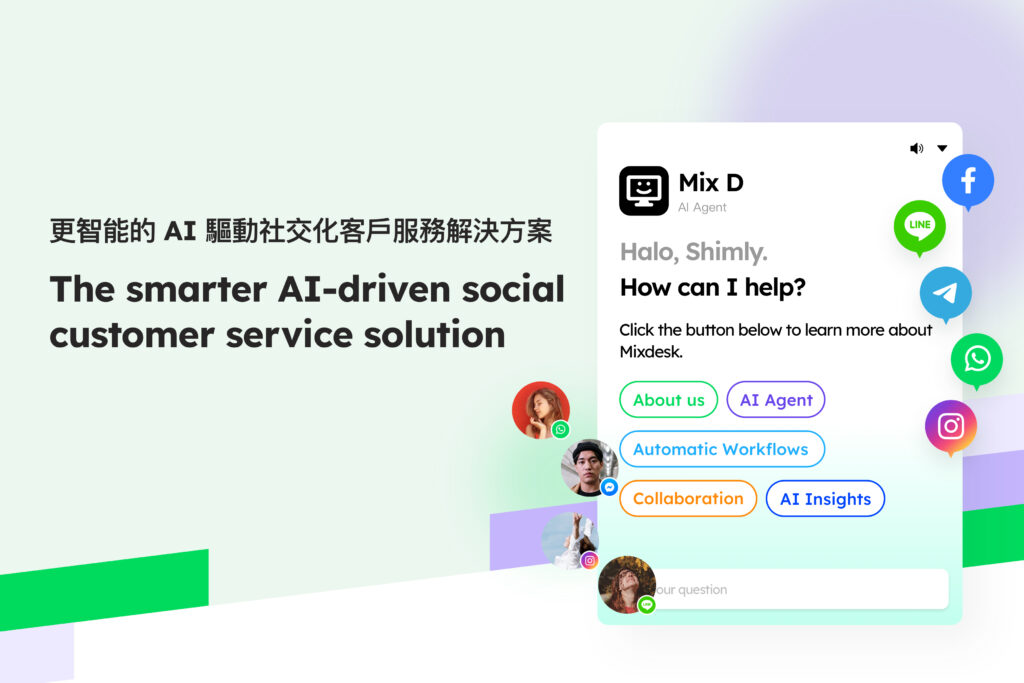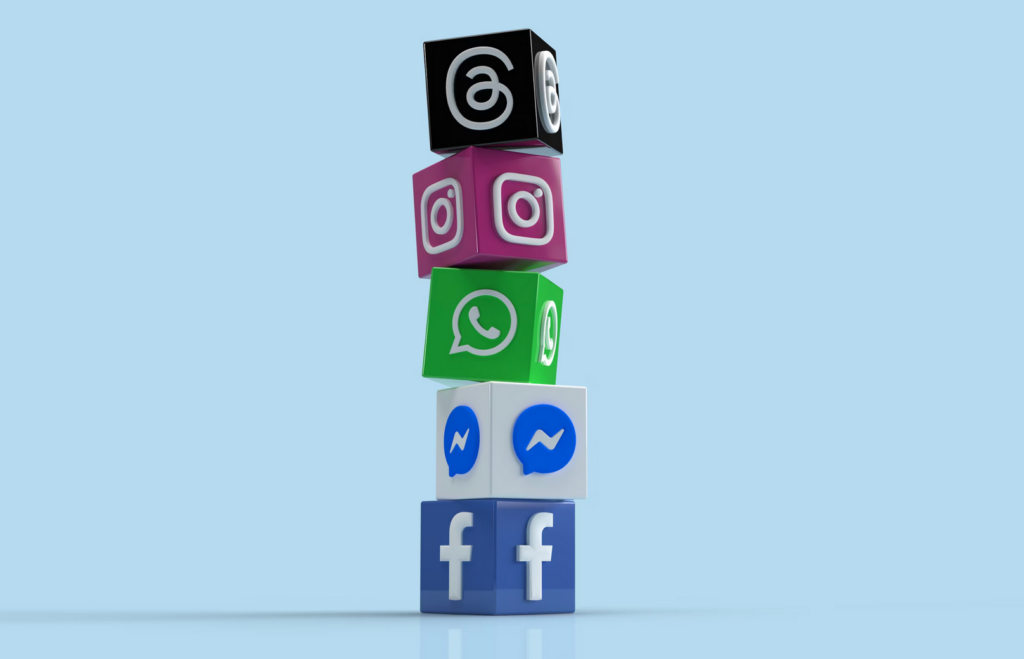Author of this article:Miya, Search engine optimization expert
With the rise of cross-border e-commerce and the diversification of overseas markets,“AI customer service commonly used across borders” It has gradually become a core component of the enterprise service system. Facing the challenges of language barriers, time difference, service efficiency, etc., more and more companies are beginning to deploy AI customer service systems, especially in pre-sales consultation, order tracking, after-sales support, etc., the performance of AI customer service has not lost labor or even completely surpassed.
This article will comprehensively disassemble the technical background, mainstream scenarios, commonly used platforms, selection suggestions, and application cases of AI customer service, and introduce an AI customer service platform favored by cross-border sellers at the end of the article.——Mixdesk, Help you find the one that really suits your businessCross-border AI customer service solution。
Mixdesk
AI Agent

- 1. What is "cross-border commonly used AI customer service”?
- 2. What are the core capabilities of AI customer service systems commonly used across borders?
- 3. What are the common “cross-border commonly used AI customer service” platforms?
- 4. Which industries rely most on "cross-border commonly used AI customer service”?
- 5. How do cross-border sellers choose an AI customer service system?
- 6. The future trend of "cross-border commonly used AI customer service”
- 7. Mixdesk: A new benchmark for AI Customer service commonly used across borders
- Conclusion
1. What is "cross-border commonly used AI customer service”?
“Cross-border commonly used AI customer service" generally refers to those intelligent customer service systems optimized for cross-border business scenarios, which support multi-language and multi-platform access”、Multi-round dialogue logic, With automatic response, self-learning, CRM docking and other functions.
These AI customer services often integrate core AI technologies such as natural language processing (NLP), knowledge graph, semantic understanding and generation, and context management, which can effectively solve the problem of “high-frequency repetitive questions and answers + complex information processing + multilingual translation” in cross-border customer service.
2. What are the core capabilities of AI customer service systems commonly used across borders?
A matureCross-border AI customer service system, Usually should have the following key capabilities:
1. Multi-language processing power
Language barrier is the first hurdle in cross-border services. Commonly used AI customer service needs to support real-time translation and natural language understanding including mainstream languages such as English, Spanish, French, German, Japanese, and Arabic, and even the recognition ability of mixed contexts (such as “Chinese English”).
2. 24-hour automatic response
There is no time difference for cross-border business,AI customer serviceIt can receive customers all year round to help sellers avoid the problem of customers waiting and missing out on business opportunities, especially during the Black Friday, Prime Day, and Christmas peak seasons.
3. Multi-platform message integration
Cross-border sellers usually use multiple platforms (such as Facebook, WhatsApp, independent stations, Email, etc.) to acquire and convert customers. The AI customer service system needs to have “message aggregation capabilities” to uniformly manage multi-channel customer communication and avoid information omissions.

4. Context tracking and dialogue memory
An excellentCross-border AI customer serviceNot only to answer questions, but also to understand the contextual needs of customers, automatically complete information and call history records, and guide conversions like professional sales.
5. Full link support for pre-sales and after-sales
From product consultation, order guidance to returns and exchanges, and complaint handling, cross-border AI customer service should cover the complete customer life cycle, and can be connected to internal ERP or CRM systems to achieve closed-loop services.
|Related reading|
3. What are the common “cross-border commonly used AI customer service” platforms?
Platform comparison table, the mainstream cross-border AI customer service systems on the market can be roughly divided into three categories:
| category | Platform name | Language support | Channel access | Main features | Applicable objects |
|---|---|---|---|---|---|
| International general type | Zendesk | Multilingual (including Asian) | Web, Email, social Media | Well-known, SaaS-based, CRM-integrated, and fully functional | Medium and large cross-border enterprises |
| Freshchat | Multilingual | Websites, Apps, social media | Connect with the Freshworks ecosystem, suitable for small and medium-sized enterprises | Small and medium enterprises | |
| Tidio | 10+languages | Shopify, Wix, Messenger, etc. | Support real-time chat +email + AI Q&A, easy to deploy, cost-effective | Start-up cross-border sellers | |
| Platform built-in type | Amazon Q&A Bot | Mainly English | Amazon embedded | No need to deploy, automatically answer buyers' frequently asked questions | Amazon platform sellers |
| AliExpress Smart Customer Service | Multilingual | Within the AliExpress platform | Combine platform rules to automatically handle logistics, orders, and disputes | AliExpress Merchants | |
| AI-driven | Mixdesk | Full language support | Facebook, Instagram, WhatsApp, independent stations, etc. | Based on GPT-4.1, customized person settings, multiple rounds of dialogue, and multiple channels of aggregation | Multi-platform sellers/overseas brands |
| ManyChat | English, Spanish, etc. | Messenger, Instagram | Strong process-based automatic dialogue, suitable for marketing interaction | Social marketing seller | |
| ChatGPT API access service provider | Full language support | Self-built channels (need to be developed) | Can be highly customized, large development volume, operation and maintenance required | Companies with technical teams |
4. Which industries rely most on "cross-border commonly used AI customer service”?
1. Cross-border e-commerce
This is one of the largest user groups of AI customer service, especially suitable for independent stations andThird-party platform sellers, Used for order inquiry, logistics tracking, and product recommendation.
2. Overseas brand/manufacturing company
For overseas B2B/B2C enterprises such as construction machinery, consumer electronics, textiles, and home furnishing, AI customer service can undertake tasks such as technical consultation, after-sales docking, and data push.
3. SaaS and digital content service provider
Overseas user registration, subscription, invoicing, and refund issues are frequent, and AI customer service responds to users quickly through standardized processes and scripts, reducing labor investment.
4. Education and tourism overseas platform
Such as online language teaching platform、Overseas travel service provider, AI customer service is responsible for answering questions, making appointments, document guidance, etc. to improve the efficiency of international services.
|Related reading|
5. How do cross-border sellers choose an AI customer service system?
When choosing “Cross-border commonly used AI customer service”, it is recommended to start from the following dimensions:
1. Language support range
Priority is given to support multi-language self-learning and multi-language automatic translation、Multilingual training system, Improve the user experience.
2. Platform integration ability
Whether to supportFacebook、Instagram、WhatsApp、Telegram、LINE, Independent stations, Shopify and other platforms access, determines your service scope.
3. Degree of intelligence
Whether you can understand complex intentions and execute instructions (such as “Help me check the status of the order”) is the key to measuring whether AI customer service is really “intelligent”.
4. Expense model
Some platforms adopt opaque models such as token billing and dialogue count billing, and the cost is uncontrollable in the long run. It is more rational to choose “on-demand pricing” or “unlimited Token” solutions.
5. Degree of industry adaptation
It is best to choose a service provider that has a successful landing case in your industry and has completed model training, so that it can be more "talkative” and avoid cold answers.
6. The future trend of "cross-border commonly used AI customer service”
1. Deep integration with large models
The continuous upgrading of large models such as GPT-4.1, Claude, and Gemini will further enhance the context and emotions of AI customer service.、Understanding of intent, towards “humanoid customer service”.
2. The concept of ”AI employee" takes shape
More and more AI customer service will not only be an answering tool, but an “agent” with sales capabilities, emotional management capabilities, and data analysis capabilities.
3. Data-driven service optimization
During the reception process, AI customer service can collect and feedback data such as user behavior, interest tags, and communication conversion rates to feed back marketing and operational decisions.
4. Deep integration with CRM and ERP
Realize the integrated service process: from customer acquisition, conversion, ordering, logistics, and after-sales, all automation is closed loop, and AI customer service becomes the operational nerve center.
|Related reading|
7. Mixdesk: A new benchmark for AI Customer service commonly used across borders
Among the many “cross-border commonly used AI customer service” platforms,MixdeskRelying on the leadingLarge model capability and omni-channel adaptation capability, Is quickly becoming the best choice for overseas companies.

Mixdesk is an overseas multi-channel intelligent customer communication platform that can unify multiple channels such as Facebook, Instagram, WhatsApp, Line, Telegram, and Email to help companies communicate and serve customers. Mixdesk also supports AI employee functions, allowing enterprises to achieve more efficient automated customer service.
Mixdesk Core Advantages:
✅ Built on GPT-4.1, leading in the industry in AI capabilities
Upload the knowledge base to replicate the team's strongest sales tactics, support highly customized person settings, and lead in professionalism and affinity.
✅ Full-link reception before, during and after sales
It is suitable for cross-border e-commerce, construction machinery, tourism, games and other industries, covering all customer service scenarios, and greatly improving customer satisfaction.
✅ One-stop multi-platform message aggregation
Integrate WhatsApp, Facebook, Instagram, Telegram, Line, Email, independent stations and other platforms to solveMulti-channel operationConfusion problem.
✅ Unlimited account number, unlimited conversation token
Mixdesk breaks the traditional AI platform model of "limiting usage and tiered pricing" and adopts an enterprise-level annual package plan. Enterprises can deploy with confidence and quickly realize ROI.
✅ Super deployment adaptability
It can not only be embedded in independent stations and SaaS systems, but also connect to APIs to independently expand business systems to achieve more flexible output of AI customer service capabilities.
Conclusion
AI customer service commonly used across borders No longer an "auxiliary tool”, butThe strategic core of corporate customer service。 It not only helps you save costs, but also empowers sales, enhances brand image, and optimizes user experience.
If you are looking for an AI customer service platform that truly understands cross-border, is professional enough, and can be expanded, you may wish to try it. Mixdesk ——Let AI not only “pick up customers” for you, but also “make deals” for you.
Extended reading recommendation:
- "How does Facebook view messages and solve the problem that messages cannot be opened?"? 》
- "Cross-border E-commerce Customer Service Guide: How to Efficiently Respond to Global Customer Needsbeg? 》
- "Guide to Overseas Customer Service: A Must-have for entering the International MarketStrategy》
(Want to know more? You can directly add the contact information of the business consultant to obtain an exclusive customer acquisition plan.)



